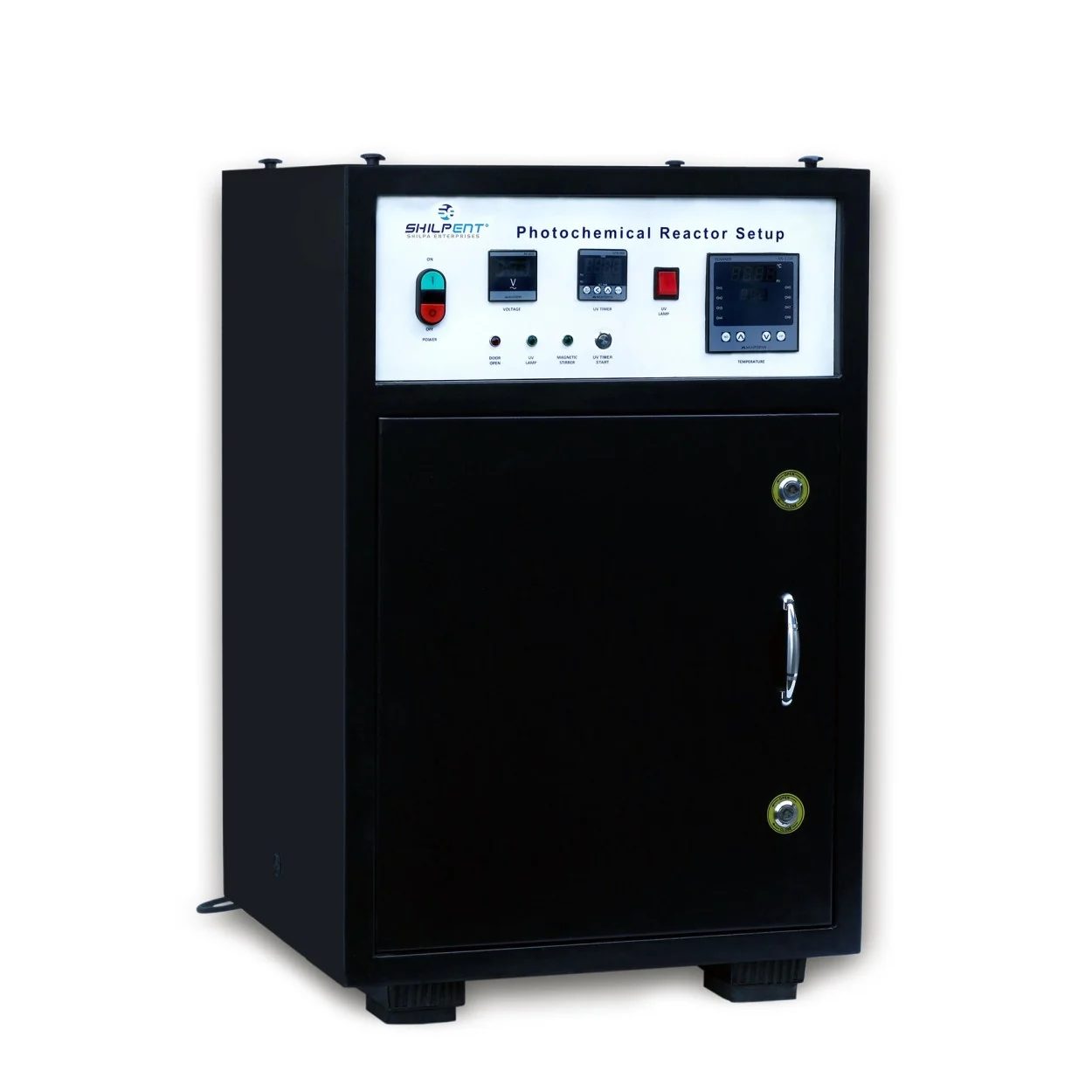






A Photochemical reactor is a device that uses light (Photon) to perform a chemical reaction. Typically, the chemical reactions need a high temperature (about 100 to 250 degrees Celsius) for a large production scale. However, this process also gives useless byproducts and losses. With the help of a photoreactor, the process of material synthesis becomes easy. It is efficient and does not produce unwanted byproducts. Mainly this reaction carries out in the presence of photon and catalyst; hence it is called a Photocatalytic reactor. The process of photochlorination, water splitting, aflatoxin production, sulfonation, sulfoxidation, and nitrosylation can be performed successfully using this reactor setup. The reactor is also known as a UV reactor because the “light” we talk about here is commonly ultraviolet light. Comparing it to the traditional methods is much more reliable, consistent, and precise and gives opportunities to explore photochemistry.
The Photochemical reactor comprises an inner double-jacked quartz immersion well and an outer borosilicate reaction vessel. The reactor's standard volume is 150ml, 250ml, 500ml, 100ml, and 2000ml, whereas we can also customize it as per client needs. We provide a Xenon lamp, Mercury lamp (visible lamp and UV lamp) with mounting as per immersion well. We produce a Visible lamp (i.e., high-pressure mercury lamp) and a UV lamp (i.e., medium pressure mercury lamp) in a range of 125W, 250W, 450W, and 1KW. In xenon short-arc light, the standard power is 75W, 150W, 350W, 500W, and 1000W. The UV photoreactor can also customize with a low-pressure mercury lamp. The full photocatalytic reactor system includes a safety cabinet, UV safety goggles, magnetic stirrer, chiller for water circulation, and accessories. There are two main types of rector setup: a batch photochemical reactor and a continuous photochemical reactor. We also customized the thin film and micro photocatalytic reactor on special request.
Our company provides a set of heat-resistant gloves, UV protection goggles, and masks along with the photochemical reactor setup. With this, the operator needs to take care of the working place has adequate ventilation as the reaction might emit harmful chemical gases. Do not work around the system without safety gear. In case you are accidentally exposed, seek medical attention immediately. We also provide a guide to safety measures with the product. Please read it carefully before operation.
We at Shilpa Enterprises believe in delivering products that meet world-class standards. We are certified by ISO (9001:2008) that maintains a high standard of products and services. We hold expertise in designing, manufacturing, and supplying explicit materials and instruments that work best in the working area. Here you can expect to get high-quality products and services along with affordable prices.